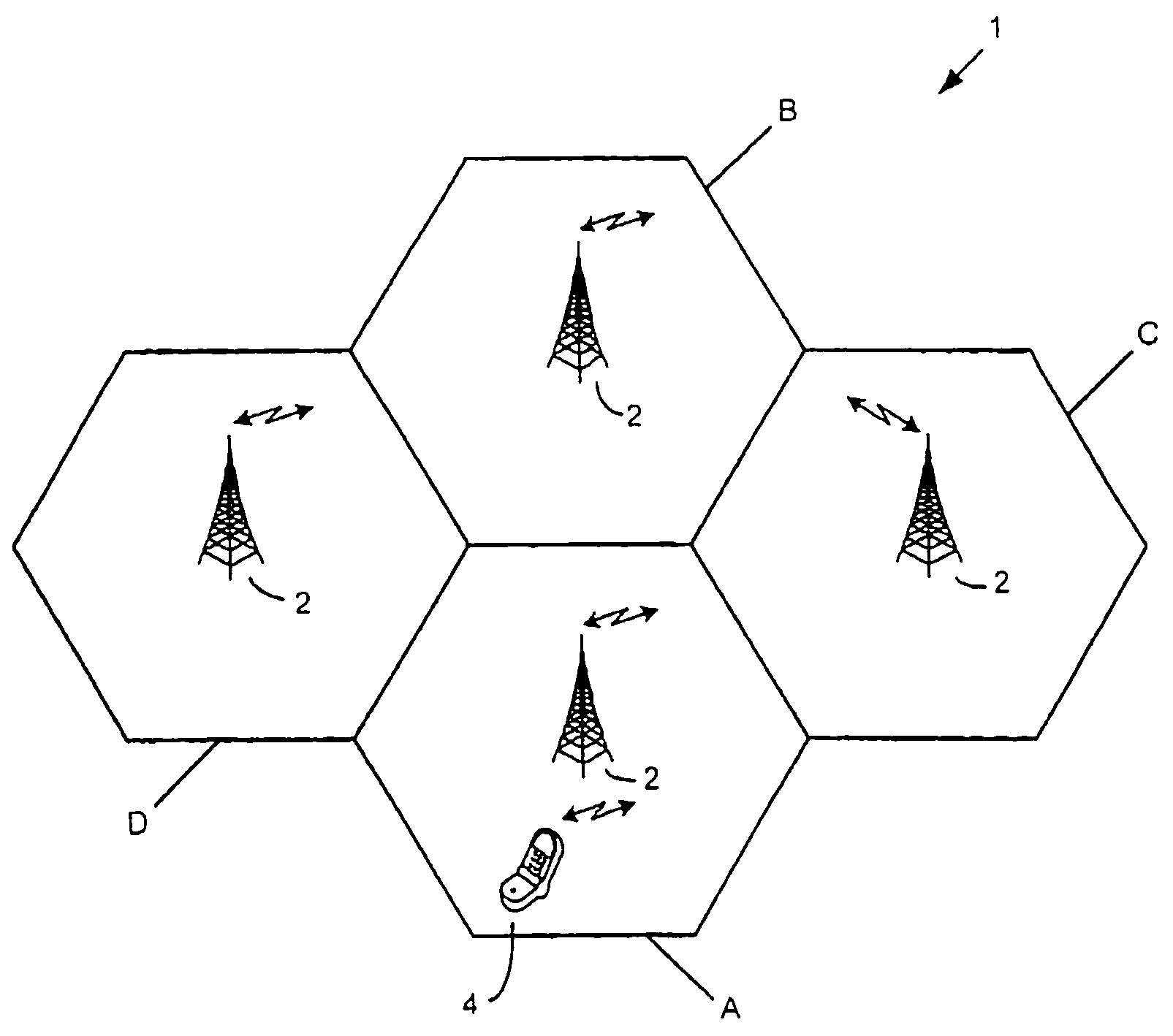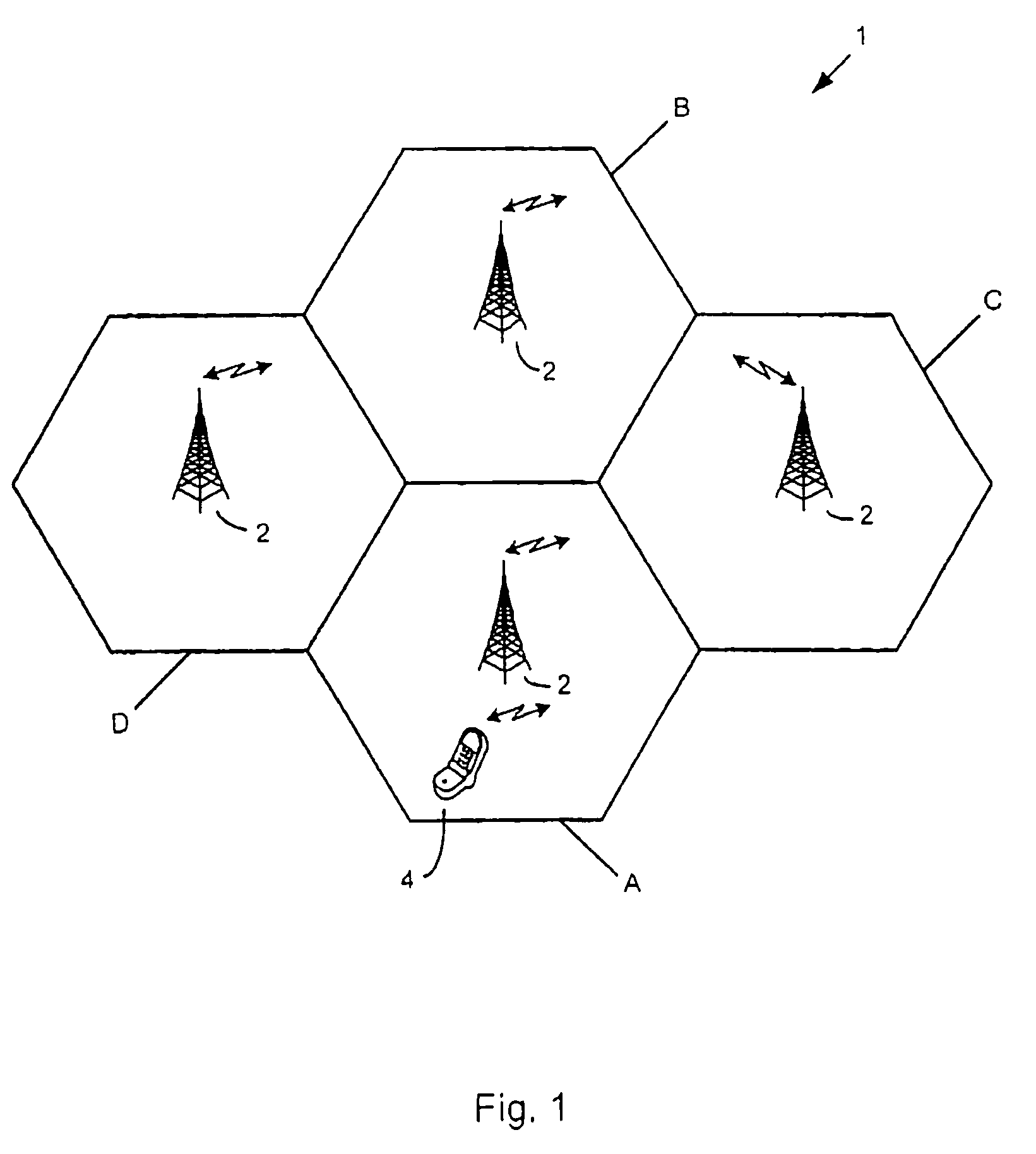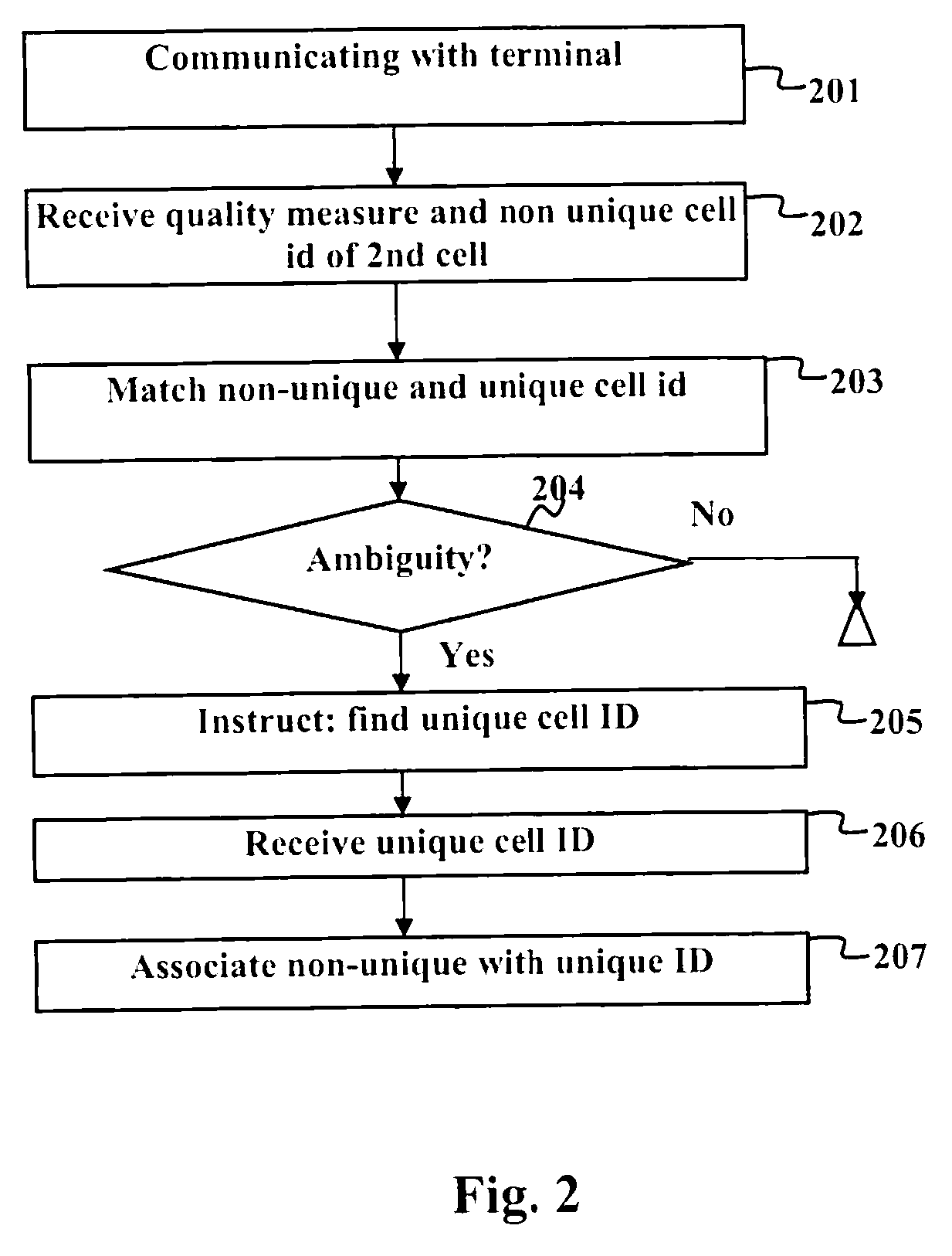Self Configuring and Optimization of Cell Neighbors in Wireless Telecommunications Networks
a wireless telecommunications network and cell neighbor technology, applied in multiplex communication, orthogonal multiplex, electrical apparatus, etc., can solve the problems of inability to fully automate the populating and maintaining of neighbor cell sets, more complicated for a terminal to detect, and failure to handover
- Summary
- Abstract
- Description
- Claims
- Application Information
AI Technical Summary
Benefits of technology
Problems solved by technology
Method used
Image
Examples
Embodiment Construction
[0022]The present invention is adapted to make a positive identification of a neighboring cell that is ambiguously detected by a mobile terminal. The ambiguity may arise when a cell, not previously detected, is reported by a mobile terminal, or when two or more cells share the same non-unique cell identity and the two cells. An ambiguity will then arise as to what cell that has been measured.
[0023]The problem exists in several systems, for example Global System for Mobile Communications (GSM), Wideband Code Division Multiple Access (WCDMA) and eUTRAN. In GSM and WCDMA, a list of neighbor cells is created for each cell in the system by a human or at least controlled by a human. In so doing any collisions in the non-unique cell identities of the neighbors should be detected and possibly solved by reallocating the non-unique cell identities. It is cumbersome to establish and update the neighbor cell list (NCL) and the allocations of non-unique cell identities, especially when the capac...
PUM
 Login to View More
Login to View More Abstract
Description
Claims
Application Information
 Login to View More
Login to View More - R&D
- Intellectual Property
- Life Sciences
- Materials
- Tech Scout
- Unparalleled Data Quality
- Higher Quality Content
- 60% Fewer Hallucinations
Browse by: Latest US Patents, China's latest patents, Technical Efficacy Thesaurus, Application Domain, Technology Topic, Popular Technical Reports.
© 2025 PatSnap. All rights reserved.Legal|Privacy policy|Modern Slavery Act Transparency Statement|Sitemap|About US| Contact US: help@patsnap.com



